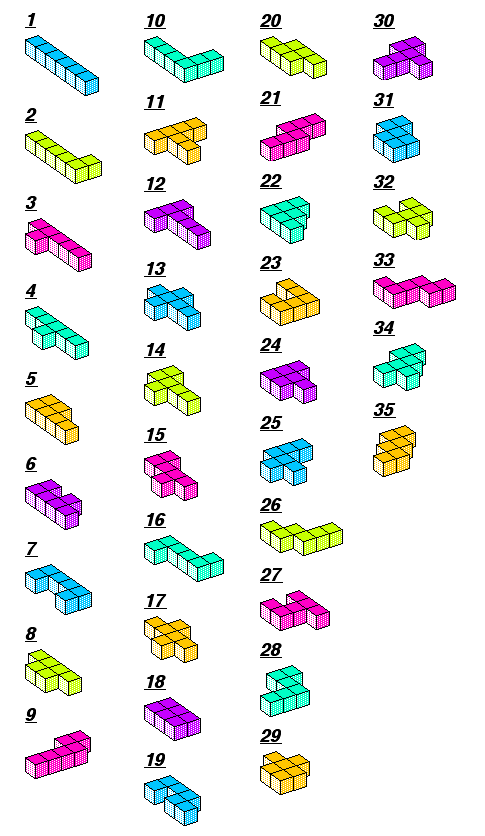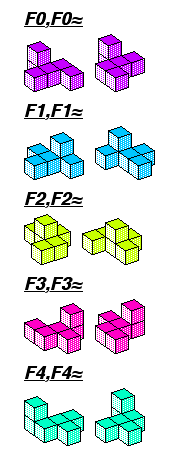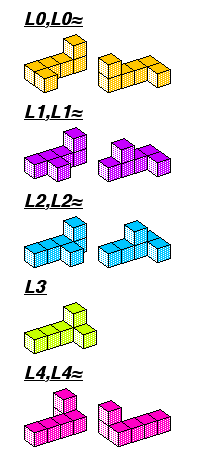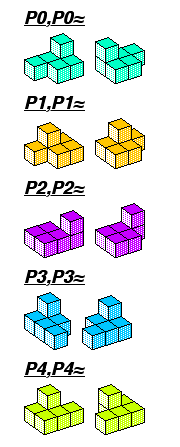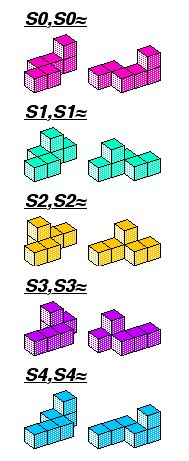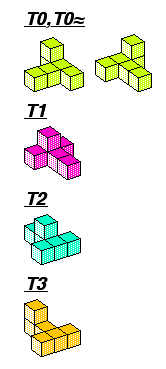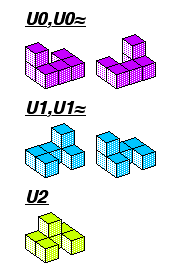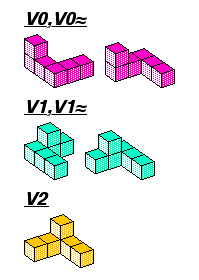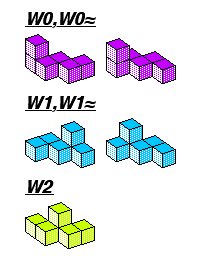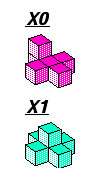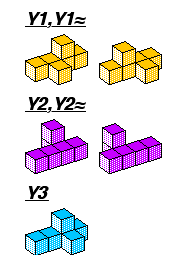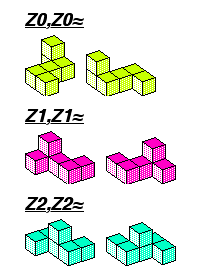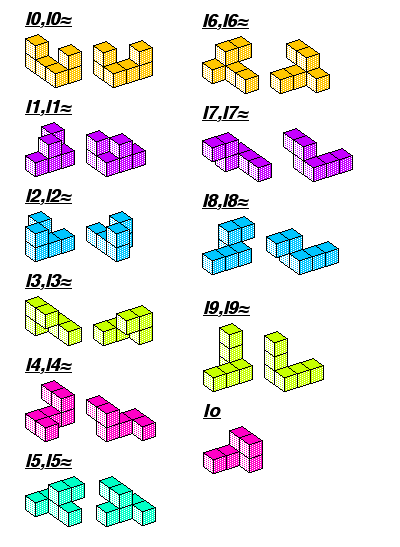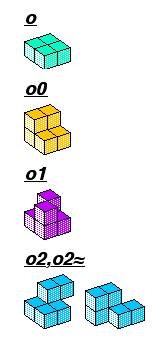This page is outdated. Newer piece names, according to a standard, can be
found here.
Below are pictures of each of the 166 hexacubes, and the names that I've given them. Note that
the names I use are a non-standard (i.e. not used by anyone else) and generally uninspired. Also
included in the set is a tetracube (corresponding to the square tetromino), which I've added to
bring the set volume up to an even 1000 cubes. This set can be packed into many interesting
shapes, among them a 10x10x10 cube (another
solution to the 10x10x10 cube).
Pieces corresponding to the thirtyfive hexominoes are just given numeric names, in no
particular order. The other pieces get their names from the name of the largest flat face they
contain. If that face is
a pentomino, the piece's name starts with the capital letter that names that pentomino. If the
largest face is a tetromino, then the piece's name starts with the corresponding lower case
letter. In case of several faces of the same size, the lowest letter (alphabetically) is used.
Some pieces have no face larger than a tromino, and these are given names starting with omega (or
horseshoe).
Within a category (such as all pieces with an F-pentomino face), the various pieces are
distinguished by a number (or in rare cases, an additional letter); the numbers are assigned in a
manner that may as well be considered arbitrary. Mirror-image pairs of pieces
have the same names, except that one of them has a squiggle character at the end of the name.
Within the category, all the non-squiggle pieces have the same face, as do all the squiggle
pieces. In other words, all the pieces with the F-pentomino face facing one way will be
non-squiggle, while all the ones with it facing the other way will be squiggle pieces.
The colors of the pieces have no meaning. I've simply drawn them in different colors to make it
easier to distinguish each piece from the ones next to it.
